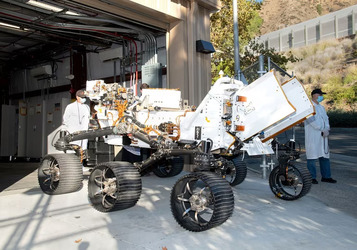The week's pick
Random Articles
Reseach Article
Analyzing Emotion Patterns based on Cutaneous Temperature
| Communications on Applied Electronics |
| Foundation of Computer Science (FCS), NY, USA |
| Volume 5 - Number 6 |
| Year of Publication: 2016 |
| Authors: G. A. Do Nascimento, E. L. Da Costa, S. G. S. Alcalá, T. M. G. De A.Barbosa |
 10.5120/cae2016652303
10.5120/cae2016652303
|
G. A. Do Nascimento, E. L. Da Costa, S. G. S. Alcalá, T. M. G. De A.Barbosa . Analyzing Emotion Patterns based on Cutaneous Temperature. Communications on Applied Electronics. 5, 6 ( Jul 2016), 6-10. DOI=10.5120/cae2016652303
Abstract
Physical and psychological diseases are problems that may be difficult to detect before they reach serious stages. However, the human body can manifest minute signals that can be identified and interpreted as warnings about a person’s health. Consequently, preventative actions can be taken. Even though it has been a challenge, due to different signals patterns between subjects, these signals can be collected and analyzed by devices which can offer real-time feedback for the user. This article presents a study based on cutaneous temperatures collected from undergraduate students when stimulated to different kinds of emotions. The goal is to correlate the kinds of emotions with specific temperature patterns observed. The results are satisfactory once it was possible to observe a pattern in temperature variation during situations of stress and relaxation.
References
- Picard RW. Affective Computing. Cambridge, MA: Mit Press; 1997. 304 p.
- Begum S. A case-based reasoning system for the diagnosis of individual sensitivity to stress in psychophysiology. 2009. 64 f. PhD Thesis – Computer Science, School of Innovation, Design and Engineering, Mälardalen University, Västerås, Suécia, 2009.
- Hudlicka E. Affective computing for game design. In: Proceedings of the 4th International North American Conference on Intelligent Games and Simulation (GAMEON-NA); 2008 Ago 13-15; McGill University, Montreal, Canada. 2008. p. 5-12.
- Kistler A, et al. Acute sympathetic responses elicited by acupuncture are pain-related and non-specific. Karger. 1996; 3(6):269-278.
- Kister A, Mariauzouls C, von Berlepsch K. Fingertip temperature as an indicator for sympathetic responses. International Journal of Psychophysiology. 1998; 29(1):35-41.
- Bacchini PHF, Ferreira JO, Barbosa TMGA. Emopad: An Affective Gamepad. International Journal of Computer Applications. 2014 Sep; 102(15):5-12.
- Bilge P, Nezih D, Dicle B. Computer adapted stroop colour-word conflict test as a laboratory stress model. Erciyes Medical Journal. 2005; 27(2):58-63.
- Picard, R. W., Fedor, S., & Ayzenberg Y. Multiple Arousal Theory and Daily-Life Electrodermal Activity Asymmetry. Emotion Review, March 2015.
Index Terms
Keywords

